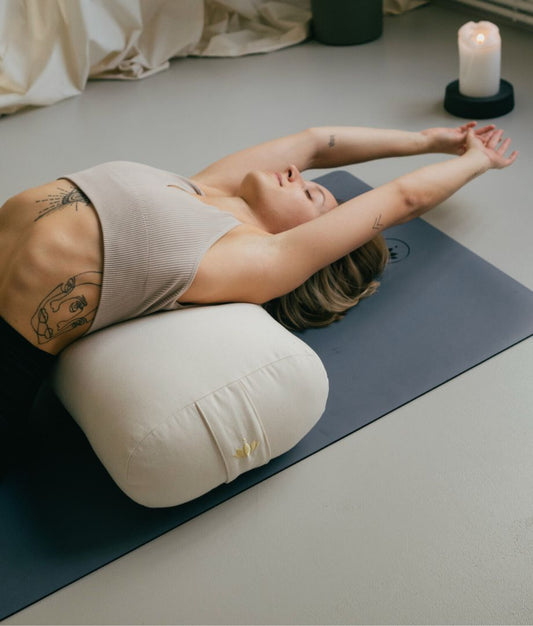
Set-Offers
Save when you buy a set
Shopping cart
Your shopping basket is empty
Yoga
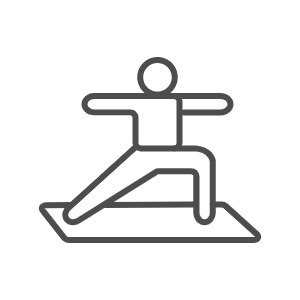
Meditation
Bundles
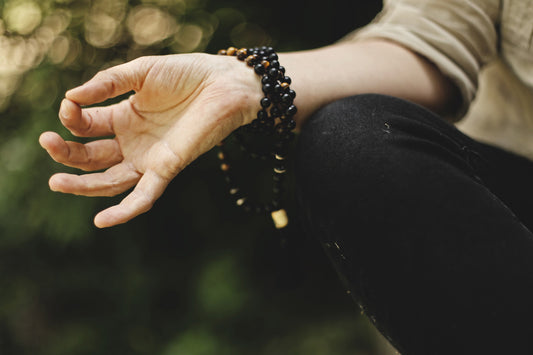
| Meditation
Mudras are gentle finger exercises with great effects. Especially for the meditation practice, the often graceful hand and finger positions are a harmonious addition. Mudras help to focus attention, calm down and deepen breathing.

Mudras can be practiced wonderfully in connection with meditation. It is known from Eastern Buddha images and temple scenes that the finger positions play an important role in certain meditations and trance rituals.
Mudra means something like seal and can also mean postures with the whole body. For example, Shavasana , the corpse pose in yoga, is a mudra called Kartari Mudra.
Mudras have the purpose of putting the practitioner in a certain mood and getting vital energy (Prana or Qi) to flow.
The mudras that we use for meditation, for example, also have healing properties. According to traditional Chinese medicine (TCM), each finger is assigned to a specific element and an individual chakra (these are nodes that connect energy channels with each other). The energies of the chakras also have an influence on our organs and gland functions and affect our emotional world.
By holding different finger combinations, the flow of energy is stimulated, energy centers are strengthened and self-healing powers are stimulated. In addition, the fingers are the start or end points of different meridians, which correspond to different organs.
| Thumb | index finger | middle finger | ring finger | Pinkie finger | |
| chakra | solar plexus | heart chakra | throat chakra | root chakra | sacral chakra |
| element | Fire | Air | Heaven | Earth | Water |
| meridians | lung meridian | Large Intestine Meridian | Pericard Meridian | Triple heater | Small Intestine Meridian |
| emotion | regulates worries | reduces anxiety | lets anger subside | comfort in grief | curbs excessive zeal |
Duration: Mudras can be held for up to 45 minutes, whereby the time can also be divided into 3 times a day for 15 minutes. However, shorter times, for example during a 15-minute meditation, are just as effective. The effect is enhanced if the mudra is used at the same time each day.
The Right Place: Mudras can be performed anywhere - in a stressful meeting, at lunchtime or on the tram. However, a meditative attitude and the corresponding alignment of the mind strengthens the effect of the chosen finger position.
Posture: Finger yoga can be practiced standing, sitting or lying down. It is important to be as relaxed and symmetrical as possible.
Hakini Mudra is ideal for deepening breathing. It is energetically assigned to the brow chakra and activates the right hemisphere of the brain. Perfect, for example, during intensive study and work phases, as it promotes receptivity and at the same time makes the mind alert and clear.

For Hakini Mudra, place all your fingertips together. Breathe deeply in and out through your nose. Breath by breath, feel your breathing slow down and your diaphragm relax.
Are you longing for inner harmony and peace? Then Shakti Mudra is your finger position of choice. It honors the goddess Shakti, who represents life energy and power. This mudra is also an ideal companion for evening meditation.

Make a fist with the thumb encircled by the remaining four fingers. Now straighten your ring finger and your little finger so that the fingertips touch. The index and middle fingers hold the thumb loosely. Hold this mudra at heart level for a maximum of 10 minutes, three times a day. Otherwise it leads to inertia.
We all want a clear head, don't we? This mudra is dedicated to the god Kalesvara, the ruler of time. The mudra ensures a positive perception of time and creates space for calm.

Place all fingertips together (as in Hakini Mudra). Now bend your index finger, ring finger and your little finger in such a way that the second phalanges gently press against each other. The thumb points down and the mudra forms into a heart shape.
Raise your elbow slightly to the side and hold this mudra at forehead level. Breathe in and out through your nose. You can also focus your inner gaze on your third eye, between your eyebrows. Practice for 5 to 10 minutes.
A mudra to harmonize the two halves of the brain is the Pran Mudra. This exercise is also suitable for children with reading and writing disabilities. Pran-Mudra is also a nice helper for headaches caused by overexertion.

Extend index and middle finger, ring finger and little finger are bent. The thumb now presses gently on the fingernails of the ring finger and the little finger.
Dhyana-Mudra is the gesture of deep contemplation and therefore the ideal companion for meditation. It helps us to find inner stillness and switch off the cinema in our heads.

For dhyana mudra, place your hands loosely on your lap, like a bowl. The left hand lies on the right hand, the thumbs touch each other at the tips. To support the meditation, place your mindfulness on your third eye. Consciously paying attention to this point makes it difficult for your thoughts to wander and you find access to deep relaxation.
In conclusion, regular repetition of the mudras in meditation practice increases the effect. We wish you a great introduction to the world of mudras!
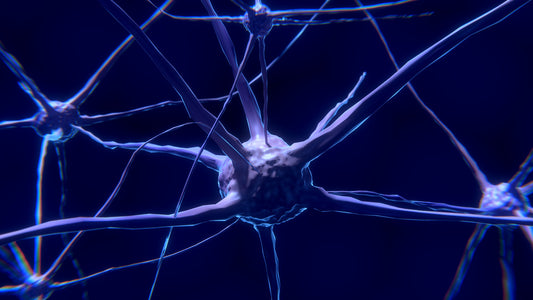
It used to be thought that the brain is static. Today we know: Yoga and meditation create new patterns in our heads through observation and carefu...
Continue reading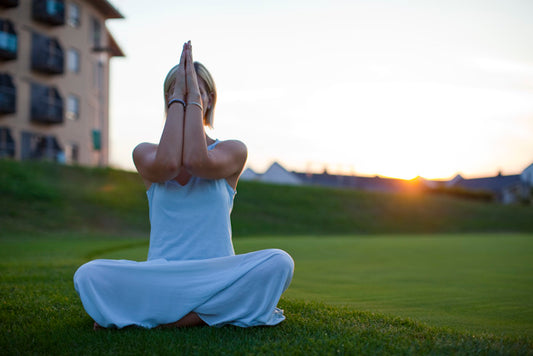
Mmmhhh... meditation. Even the word sounds decelerating. You would like to meditate, but whenever you sit cross-legged on your meditation cushion, ...
Continue reading
There are no comments yet. Be the first to leave a comment!